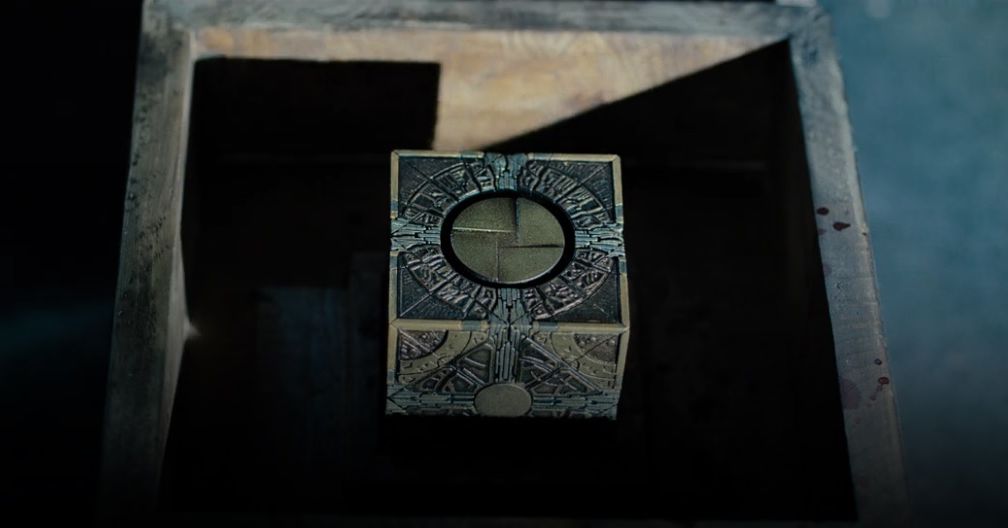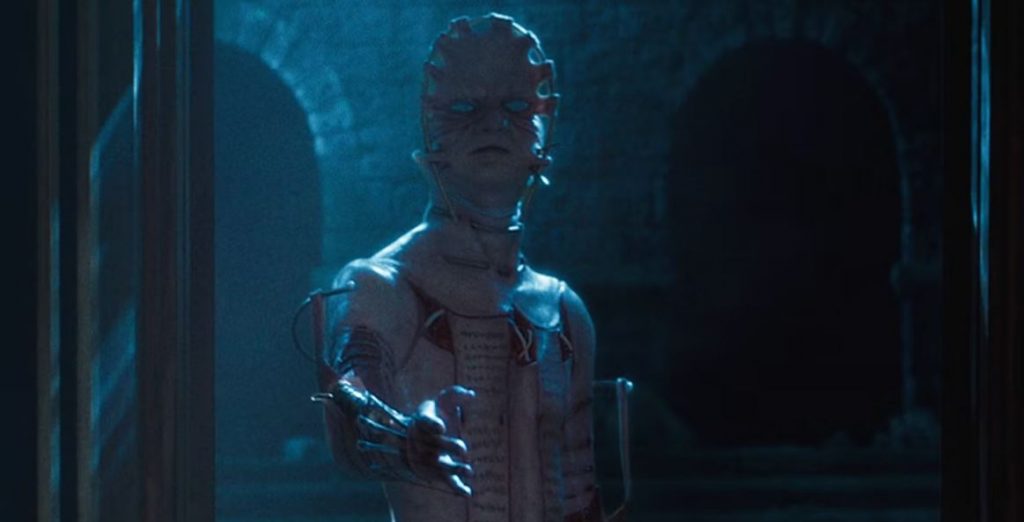Reviving forgotten or stale horror franchises is often hit or miss. Some remakes trespass sacred ground, as with 2009’s Friday the 13th. Some are welcome jumpstarts to classic franchises lost to time or muddled by myriads of cheesy sequels like 2017’s It. Clive Barker’s 1987 hit Hellraiser is the latter. The original film about the demon-summoning puzzle box mutated into an increasingly tacky and convoluted eleven-movie saga that lost sight of Barker’s vision. With the successful reboot of the Halloween franchise in recent years, I chose to give the benefit of the doubt to prospective revamps. And thankfully, the 2022 remake of Hellraiser injects much-needed life into the franchise and strikes that rare balance few remakes hit, enriching source material through clever reimagining while respectfully paying homage to what came before.
The new film introduces Riley, who comes across a mysterious puzzle box, the Lament Configuration—the franchise’s famous McGuffin—after stealing from a missing millionaire’s shipping container. As she begins to solve the box, she accidentally summons the Cenobites—demonic beings who grant the puzzle solver their heart’s desires in exchange for human sacrifices. After unleashing them on her unsuspecting friends and family, Riley must race to solve the mysteries of the puzzle box or damn her loved ones to fates worse than death.

The film expands upon the lore of the original, exploring new horizons within familiar territory. The box is still the key between realms, but it has a grander, more insidious design. The Lament Configuration is now one of six possible configurations, along with those of Lore, Laudarant, Liminal, Lazarus, and Leviathan. When these configurations are solved, and the solver sacrificed, the Cenobites grant one the following boons of life, knowledge, love, sensation, resurrection, and power. Rather than the usual hedonistic delights promised in previous films, this new plethora of forbidden pleasures offered by the Cenobites enriches Clive Barker’s original ideas on hedonism and the manic pursuit of desire. The very nature of forbidden desire is broadened, as the Lament Configuration no longer tempts deranged hedonists as in previous films, but anyone who has ever wanted anything.
This new installment also revamps the stars of the franchise, the hellish Cenobites. Demons from a hellish dimension, the Cenobites are the self-proclaimed “explorers of the furthest reaches of experience,” extending the limits of sensation with unlucky victims. The Cenobites appear as mutilated humanoids, having transformed themselves through their macabre experimentations on the nature of agony and desire. The design of the Cenobites has become a cornerstone of each film, and the remake creates a new aesthetic to explore the characterization of the Cenobites. Ripped right out of early medical textbooks on vivisection, medical instrumentations and runic script replace the dated 80s biker leather and butcher knives. The remake introduces new Cenobites, such as the lamenting Weeper, the muffled Asphyx, and the skinned Masque, each contorted and flayed as their names suggest. Beautiful and haunting, the reboot’s aesthetic gives an almost esoteric quality to the Cenobites, deepening the timelessness and quasi-religious fervour they represent.
In other horror reboots, introducing new monsters or redesigning horror icons might be a sure way to anger even the most fleeting of fans. The film takes chance, redesigning the fan-favourite leader of the Cenobites, the Priest, more colloquially known by fans as “Pinhead.” Created by Doug Bradley in 1987, the Priest serves as the cold and calculating interlocutor between the solver of the puzzle box and the Cenobites. Jamie Clayton is the Priest in the new movie, and her ethereal, graceful performance brings elegance to the role in contrast to previously wrathful and sarcastic incarnations. Instead of relying on previous films, the reboot takes a chance, designing brand new characters or radically redefining familiar ones in this novel design, demonstrating great confidence in their creative liberties.

Hellraiser so successfully reimagines its lore and monsters that the film’s only bug may be its human protagonists. In a traditional Hellraiser, the protagonist accidentally solves the Lament Configuration on behalf of an individual desiring a deal with the Cenobites and must consequently banish the demons before the deal is made. Unlike previous protagonists, Riley might actually claim more victims than the Cenobites. In almost Mr. Bean-like fashion, Riley accidentally sacrifices friends, family, and strangers to the Cenobites in her quest to uncover the truth about the puzzle box, nicking them on the box’s cursed blade. This slapstick writing and Riley’s belligerent characterization create an unlikeable protagonist, extinguishing much of the film’s stakes. Consequently, I ended up rooting for the Cenobites over the human characters, but this conceptual hiccup does not impede the film’s momentum, as the film realizes who the real stars are: the Cenobites.
Although its human characters might be flawed, the film’s premise and creature design more than make up for it, delivering a spectacle of horror that both thrills and chills. this Hellraiser is a worthy remake of the original and sure to appeal to both newcomers and hardcore fans, expanding upon the original without forsaking its source material. Hopefully, the minds behind this Hellraiser get the green light for a sequel, as I’m sure fans would love to see more stories told within this new netherworld. 2022’s Hellraiser is the perfect horror movie this Halloween season. Whether you are a hard-core fan of the original, or in need of a good fright, Hellraiser (2022) has “such sights to show you” this Halloween season.
